
If you live in a home with low ceilings, you’ll know that it can be difficult to find the perfect ceiling fan for your space. There are so many different styles and options available, it can be hard to choose which one is right for you. Fortunately, there are some great ceiling fan alternatives for low ceilings rooms, and you can use these to create a unique look in your space that’s both practical and attractive.
Ceiling fans are a popular choice for many homeowners, as they provide both lighting and air circulation. However, in rooms with low ceilings, traditional ceiling fans can hang too low and become a hazard or simply look out of place. That’s where alternative options come into play, allowing you to maintain comfort and style without compromising on safety.
If you live in an apartment, condo, or townhouse with a low ceiling, you might find yourself looking for some creative alternatives to your typical ceiling fan. Fortunately, there are various cool, unique, and affordable options to consider that can enhance the ambiance and functionality of your space.
In this article, we will explore the best ceiling fan alternatives for low ceilings, highlighting their features, pros, and cons. By considering these alternatives, you can find the perfect solution to keep your low-ceilinged room comfortable and visually appealing. Whether you prefer an AC unit, floor fan, box fan, wall fan, or another option, there is undoubtedly a suitable alternative that will meet your needs and enhance your living space. Stay tuned for our comprehensive list of the best ceiling fan alternatives for low ceilings.
Ceiling Fan Alternatives for Low Ceilings
Tower Fan
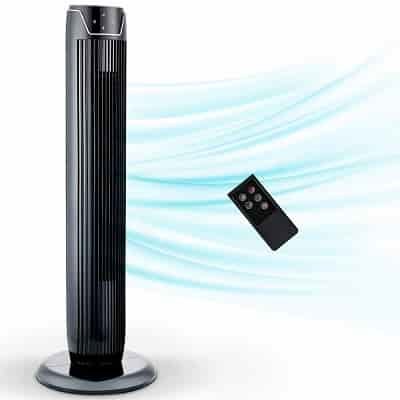
A tower fan is the most functional choice if the ceiling in your room is a piece low and you have restricted space. A tower fan is a tall electric fan that is sufficiently thin to be placed at the edge of a room. It’s ideal for use in condominiums, lofts, and little rooms because it won’t occupy a lot of room.
There are different benefits to having a tower fan in your room. For one’s purposes, it comes in different styles and plans so you can pick one that suits you. It is also genuinely reasonable. When it comes to comfort, most tower fan models have regulators that allow you to change their speed settings from any point in the room.
In the event that you have little kids, tower fans are great. The edges of the fan are encased in a unit, meaning little children won’t have the option to put their fingers in the fan. Due to it’s size, a tower fan doesn’t have much of a stretch fit in the squeezed region of your home.
A bladeless tower fan is something that you might be interested in. This is a kind of tower fan without an edge, as you might think from the name. It works at a calmer level than a bladed tower fan because it gives a smoother wind current.
It is accompanied by highlights like ionization. It won’t come as a surprise that a bladeless tower fan will be energy proficient and simple to perfect. It would be great to hack up something like $100 for this kind of fan.
Tower fans have their part to play. It tends to be stronger than the electric fans. It won’t be close to the cooling impact of a cooling unit on a room of its size. If you pick a tower fan instead of an AC unit, you can get lower power bills.
Top Picked Best Tower Fans to Buy
Dyson Cool AM07 Air Multiplier Tower Fan
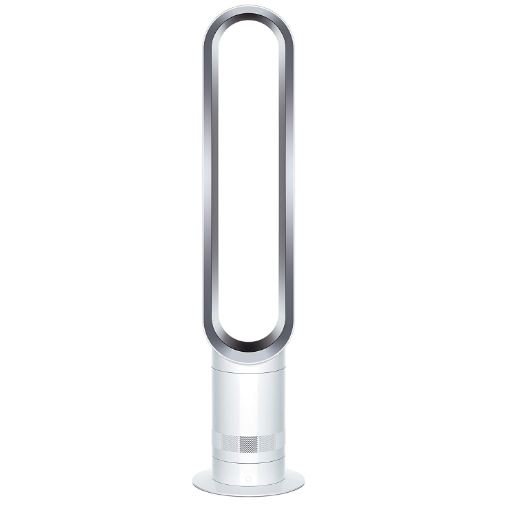
The Good
- Air Multiplier technology
- 10% less Power Consumed
- Sleep Timer
- Easy to Clean
- Remote Control
The Bad
- High Price
Pros of Tower Fan
- Since you can pick tower fans with more features as an alternative to the ceiling fan, it’s genuinely simple to discover one that will be within your budget.
- Tower fans that have remotes can without much of a stretch be controlled from anyplace in your home.
- Since they have various diverse speed settings you can undoubtedly control how quickly the fan works and how much air it moves around in your home.
- Indeed, even the more affordable models as a rule accompany various highlights with the goal that you will take advantage of your new fan.
- There isn’t any security worry with tower fans, as the fan sharp edges are on the whole securely encased inside the unit. This implies kids won’t most likely unintentionally put their fingers into the fan and hurt them on the cutting edges.
- Because of their shape, you can without much of a stretch fit tower fans into littler or progressively confined territories of your home. They look incredible when put in a corner and won’t stand out the way that different sorts of fans will.
Cons of Tower Fans
- Tragically, tower fans are not a decent substitution for cooling, as they don’t have the power expected to cool a huge space as compared to the air conditioners.
- While most tower fans are generally tranquil, there are a few models that are more intense than pedestal fans, so it’s imperative to do your examination before making a buy.
- These fans do waver, yet it is difficult to change the wind current up and down, which makes it hard to control precisely what region of the room will be influenced by the fan.
Pedestal Fan

A tower fan and a pedestal fan are the same thing. The pedestal fan is taller than the tower fan. Its level can go from 16 crawls up to 48 inches. It’s marginally greater than a tower fan and can occupy a critical room. There are a few benefits of using a pedestal fan, which might encourage you to think about it as an option in contrast to ceiling fans.
For one’s purposes, you have control over the wind current and where it goes with a pedestal fan. It is possible to shift its head all over or side to side. If you keep it consistent, you could have the fan impact the air directly into you.
Changing the fan speed settings is also possible. You have control over the amount of air in your room, that’s what this means. If your relatives or visitors get cold, you can either bring down the fan speed setting or have the fan blow in another place.
There are drawbacks to using a pedestal fan in your home. It is possible that it is a blemish in light of its size. Since it is marginally greater than a tower fan, a pedestal fan might occupy some valuable space in your room. It was an unfortunate decision for the little rooms.
An AC unit or even a ceiling fan can bring down the temperature in a lounge during the warm summer season, but a pedestal fan will most likely be unable to do the same. It doesn’t scatter warm air because it merely moves air in your space. In this way, the air it courses might be warm, especially during a hot summer day.
Top Picked Best Pedestal Fans to Buy
Rowenta Turbo Silence Oscillating Pedestal Fan
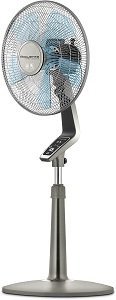
The Good
- Extremely Silent Technology
- Powerful airflow
- 5 speed settings
- Compact remote control
- Adjustable height from 42″ to 54″
The Bad
- Not Found
Pros of Pedestal Fan
- It’s extraordinarily simple to control your wind stream and which heading it is going in when you utilize a Pedestal fan.
- Since you can tilt the header of the fan all the side, you can settle on a coordinated impact of cooler air in your home or enable the fan to move delicately from side to side.
- Being able to alter your fan speed implies that you can control how much air flows in your home and whether it will be awkward for individuals in your space.
- On the off chance that individuals get chilled, you can undoubtedly alter the fan to blow in another direction without affecting the wind stream in your home.
- Pedestal fans are commonly incredible because of their bigger cutting edges and huge fan zone.
- They can without much of a stretch, flow air in an enormous space.
Cons of Pedestal Fan
- Shockingly, Pedestal fans don’t do a lot to improve the decor of your home and can be thought of as blemish.
- Since Pedestal fans are so amazing, they are not perfect for use in littler spaces. In the event that you do attempt to utilize a Pedestal fan in a little room, at that point you may experience issues warding off papers from being blown or finding the correct speed for your solace level.
- Pedestal fans don’t improve the air quality in your home. They essentially move the air that is now in your space around to make you feel cooler.
- Any residue that gathers on the fan edges can be spread all through the room when the fan is turned on.
- These fans will in general be a lot noisier than different alternatives.
Table Fan

There are a few similitudes given to the box fan by the table fan. It’s small and versatile, so you can put it wherever you want. A small fan is meant to cool a space or individual close by. In comparison to a ceiling fan, it is a modest and energy effective option.
A table fan is easy to understand and there’s a compelling reason to introduce it. As a result of its reduced size, you can put it anyplace you want. It is usually accompanied by a rope that you can associate with a divider outlet. A table fan can be used in various parts of the house because of its compactness.
The controller that most table fans come with would allow you to change fan speed without any problem. The controller can be used to turn on and off the table fan, as well as change its wavering.
A table fan can help with the dispersion of air. It can help keep your room cooler. Everybody can feel the breeze of the table fan when it pivots up to 180 degrees.
This ceiling fan is also a financial plan. A table fan costs less than a ceiling fan. 50 to 100 watt is how much energy it consumes. If you compare that to the 900 watts of force expected by a climate control system, you can imagine how much reserve funds you can save.
The utilization of table fans has its drawbacks, despite the large number of upsides. The table fans have blades that pivot rapidly. While the cutting edges are confined inside a case, there is room for small children to put their fingers inside. If you have small children in your family, you might need to consider using a table fan.
One issue with using a table fan is that it can be hard to clean. To get to the edges, you will have to open up the enclosure. It is possible to clean the edges with a fabric at that time. It isn’t that simple to keep a table fan.
Top Picked Best Table Fan to Buy
Honeywell HT-900 TurboForce Air Circulator Table Fan
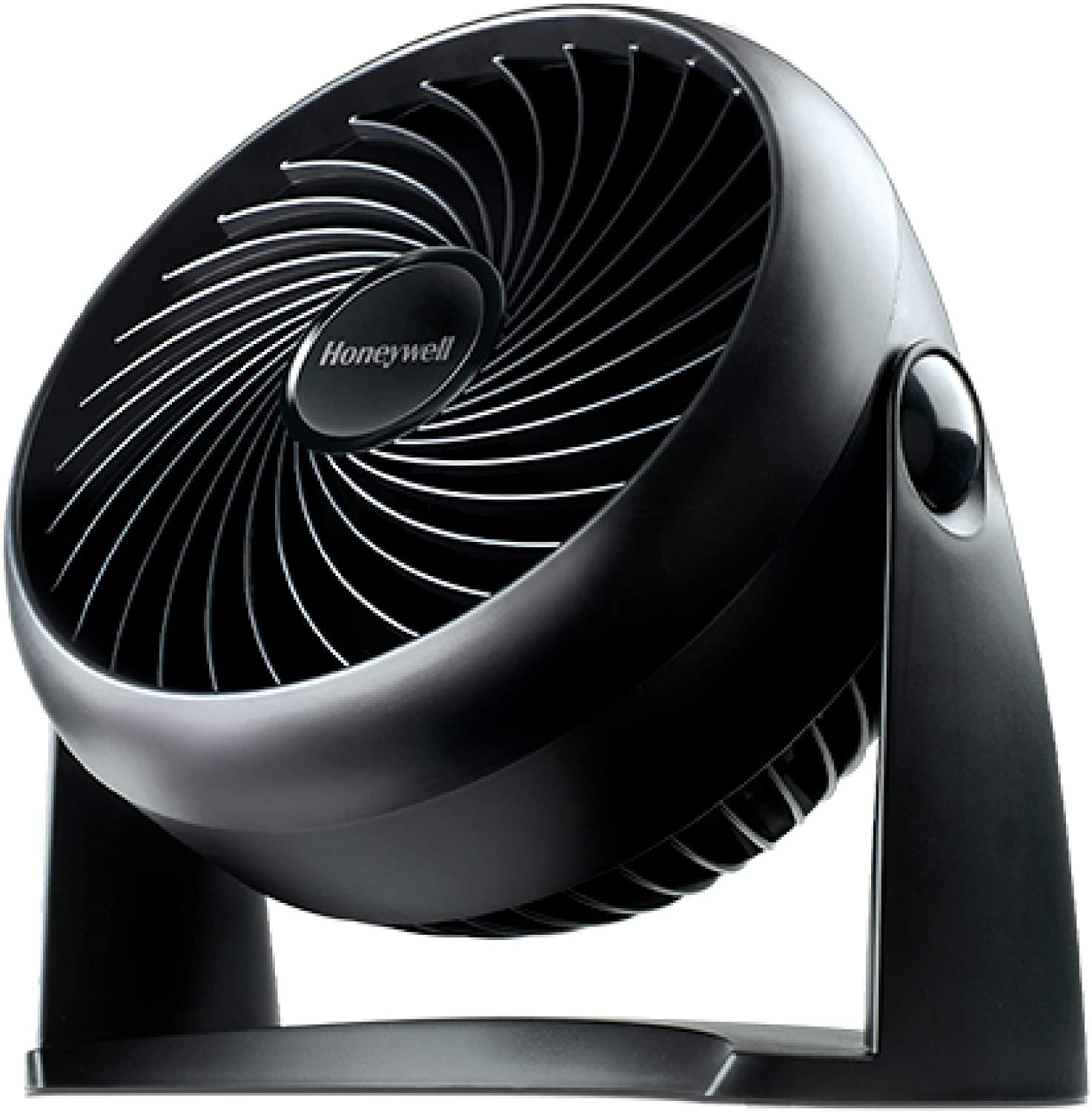
The Good
- 90 Degree Pivoting Head
- Small Fan for Table
- Aerodynamic turbo design
- 185 CFM for optimal comfort
The Bad
- Not ideal for large space
Pros of Table Fan
- The table fan is portable and easy to handle, so you can carry it anywhere and anytime when you want.
- Consumes less power as compared to a ceiling fan or any other fan.
- Best for individual use as it will small in size and throw airflow in a specific particular direction which you set.
- Table fan is budget-friendly so anyone can afford this.
Cons of Table Fan
- Not as effective when you are searching for a cooling solution for a large room.
- The airflow of the table fan not much as compared with other types of fan.
- Table fan produces some murmur-type sound that might disturb you while you are resting.
Wall Mount Fan
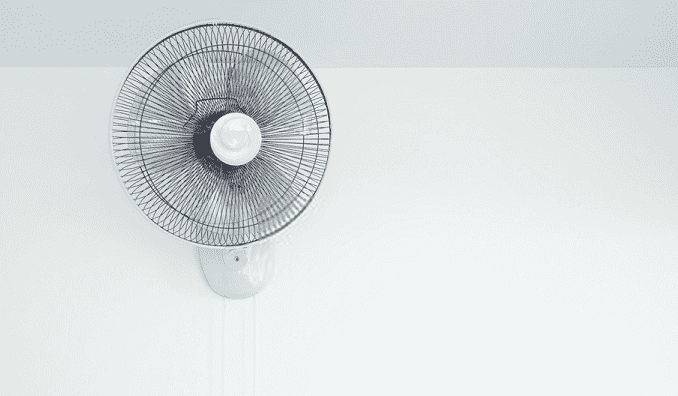
Similar to a tower fan, a wall mounted fan can be used as an alternative to a ceiling fan. Assuming you have a low roof, this would work well. One benefit of a wall fan is that it usually accompanies a wavering capacity, something that a conventional ceiling fan doesn’t have.
The wall mounted fan is fastened on the wall. There are different sizes from 12 to 30 inches. Normally, it is positioned at eye level. It would be at a protected separation away from pets and little children. It is possible to change the speed settings with a dial on the unit, controller, or hanging line.
A wall mounted fan would need the same establishment as a ceiling fan. A wall fan is also good for use outside. Wall mounted fans have a clouding element that helps bring down the outside air temperature.
Top Picked Best Wall Mount Fan to Buy
Hurricane 20 Inch High-Velocity Wall Mount Fan
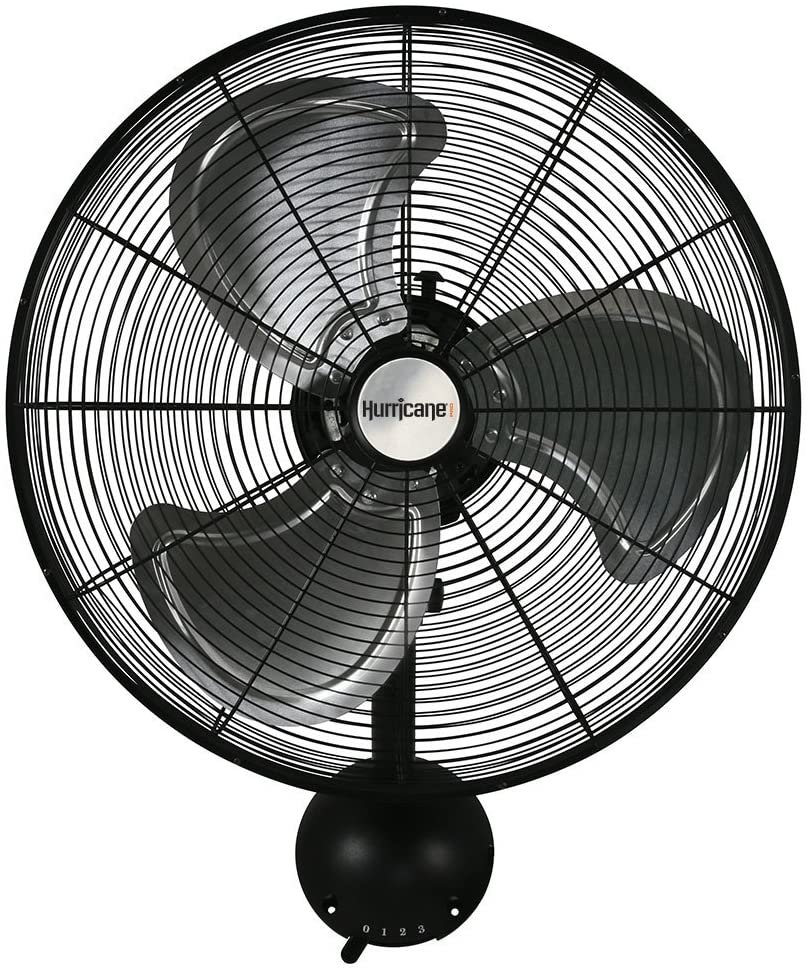
The Good
- Oscillation & Tilt
- Adjustable Speed
- Safe & Versatile Design
- ETL listed
The Bad
- No remote control
Pros of Wall Fan
- Space-saving: Wall-mount fans have a space-saving design that frees up floor space, making them ideal for small rooms or areas with limited space.
- Versatility: These fans can be easily installed in various locations, providing targeted airflow where it’s needed most. They are suitable for bedrooms, living rooms, kitchens, and even outdoor spaces like patios or garages.
- Improved air circulation: Wall-mount fans can be angled and adjusted to ensure effective airflow and ventilation throughout the room, making them useful in areas with poor air circulation.
- Aesthetic appeal: With a range of designs and styles available, wall-mount fans can complement your room’s decor and add visual appeal.
Cons of Wall Fan
- Limited mobility: Unlike portable fans, wall-mount fans are fixed in place, limiting their ability to be moved or repositioned.
- Installation complexity: Installing a wall-mount fan may require drilling holes and securely mounting it to the wall, which can be a more involved process than using a portable fan.
- Limited coverage: Wall-mount fans provide airflow to a specific area and may not offer as broad coverage as ceiling fans or larger fans.
- Noise levels: Depending on the model and fan speed, wall-mount fans can produce some noise while operating, so it’s important to choose a fan with low noise levels if you prefer a quieter environment.
Window Fan

On the off chance that you wish to keep up a decent wind stream and convection in a little estimated room with a low roof, a window fan would be a brilliant alternative option to the ceiling fan. The twin cutting edges can invigorate the air inside the little room, so we can continue breathing in outside air when resting. It is valuable for sleepers’ wellbeing.
Because of the reversible engine, this fan can intake or exhaust the air in the room. It very well may be put on the window outline, so it assists trade with airing inside and outside. In any case, would it be a good idea for me to admission or release the gas? It relies upon air outside the window and the temperature.
For example, we shouldn’t set the window fan to allow the air from outside if the air quality is poor, says there is a development work by your windows. On the off chance that we admissibility the air, we will likewise get the residue and different particles in the room. For this situation, we can deplete the air to the outside.
Top Picked Best Window Fan to Buy
Holmes Dual 8 Inch Blade Twin Window Fan
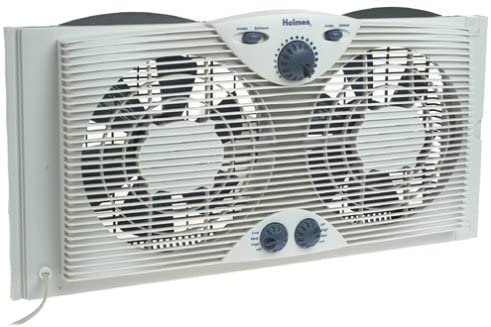
The Good
- Adjustable extender screen
- Reversible motors
- Comfort Control Thermostat
- Fits Virtually All Windows
The Bad
- No remote control
Another circumstance is that if your room is cold and there is daylight outside your home. We can allow the sightseeing, so your room gets hotter. In summer, despite what might be expected, on the off chance that you feel blistering in the room, we can fumes the gas outside, which lessens the room temperature.
In this manner, when choosing the bearing of the wind stream, we have to think about the result and what result might we want to accomplish. The best thing about the roof fan elective is that the Holmes’ double sharp edge window fan has a reversible cutting edge engine, so it gives high adaptability with regards to air course bearing. Furthermore, the two individual fans can have various bearings simultaneously, says one is admitting air and another is depleting.
Pros of Window Fans
- Cost-effective: Window fans are a more affordable option compared to air conditioning units or other cooling systems.
- Easy installation: They can be easily installed in standard-sized windows, making them convenient for renters or temporary cooling needs.
- Versatile airflow control: Window fans can be set to intake or exhaust air, allowing for customizable airflow and ventilation.
- Energy-efficient: They consume less energy than air conditioners, helping to lower energy costs.
Cons of Window Fans
- Limited cooling capacity: Window fans may not provide the same level of cooling as air conditioning units, especially in extremely hot or humid conditions.
- Noise levels: Window fans can produce noise, especially at higher speeds, which may be a concern for those sensitive to noise.
- Restricted view and natural light: Installing a window fan obstructs a portion of the window, limiting the view and reducing natural light.
- Security concerns: Using a window fan requires leaving a partially open window, which may raise security concerns, particularly on lower levels of a building.
Why search for Best Ceiling Fan Alternatives for Low Ceilings Room
Here are the key reasons why searching for the best ceiling fan alternatives for low ceilings rooms is important:
Safety
Traditional ceiling fans are not suitable for rooms with low ceilings, as they can pose safety hazards. The spinning blades may come too close to individuals or objects, increasing the risk of accidents. Exploring alternatives ensures safer cooling options for low-ceilinged spaces.
Noise Reduction
Ceiling fans, over time, can become noisy due to wear and tear or loose screws. This can be disruptive, especially in quiet environments or during sleep. By searching for alternatives, you can find fans that offer quieter operation, promoting a more peaceful atmosphere.
Proportional Fit
Ceiling fans can visually overpower small rooms, creating an imbalance in the space’s design. Exploring alternative options allows you to find fans that are better suited in size and proportion to the room, ensuring a more harmonious aesthetic.
Ease of Cleaning
Cleaning traditional ceiling fans can be challenging, particularly in low-ceilinged rooms where accessing the blades is more difficult. Dust and debris accumulation can reduce the fan’s efficiency and air quality. Searching for alternatives provides the opportunity to find fans that are easier to clean and maintain, simplifying the upkeep process.
Efficient Use of Space
Low ceilings limit the available space for proper ceiling fan installation. By searching for alternatives, you can find fans specifically designed for low ceilings, optimizing the utilization of the available space while still providing effective cooling.
Conclusion
In conclusion, finding the best ceiling fan alternatives for low ceilings is crucial for ensuring safety, minimizing noise, maintaining a balanced room design, simplifying cleaning, and optimizing space utilization. Traditional ceiling fans are not suitable for low ceilings, and their noise levels and large size can be impractical and overpowering.
By exploring alternative options specifically designed for low ceilings, individuals can discover fans that offer quieter operation, proportional fit, easier cleaning, and efficient use of space. These alternatives provide safer and more suitable cooling options, ensuring a comfortable and visually appealing environment.
Whether it’s opting for fans with smaller blades, bladeless fans, stand fans, table fans, or other creative alternatives, the search for ceiling fan alternatives allows individuals to customize their cooling solutions to meet their specific needs and preferences.
Ultimately, by considering the limitations of traditional ceiling fans in low-ceilinged rooms and exploring the best alternatives available, individuals can create a functional, stylish, and comfortable space while enjoying efficient and effective cooling.
